Features
Light afflictions
Published
5 years agoon
By
Editor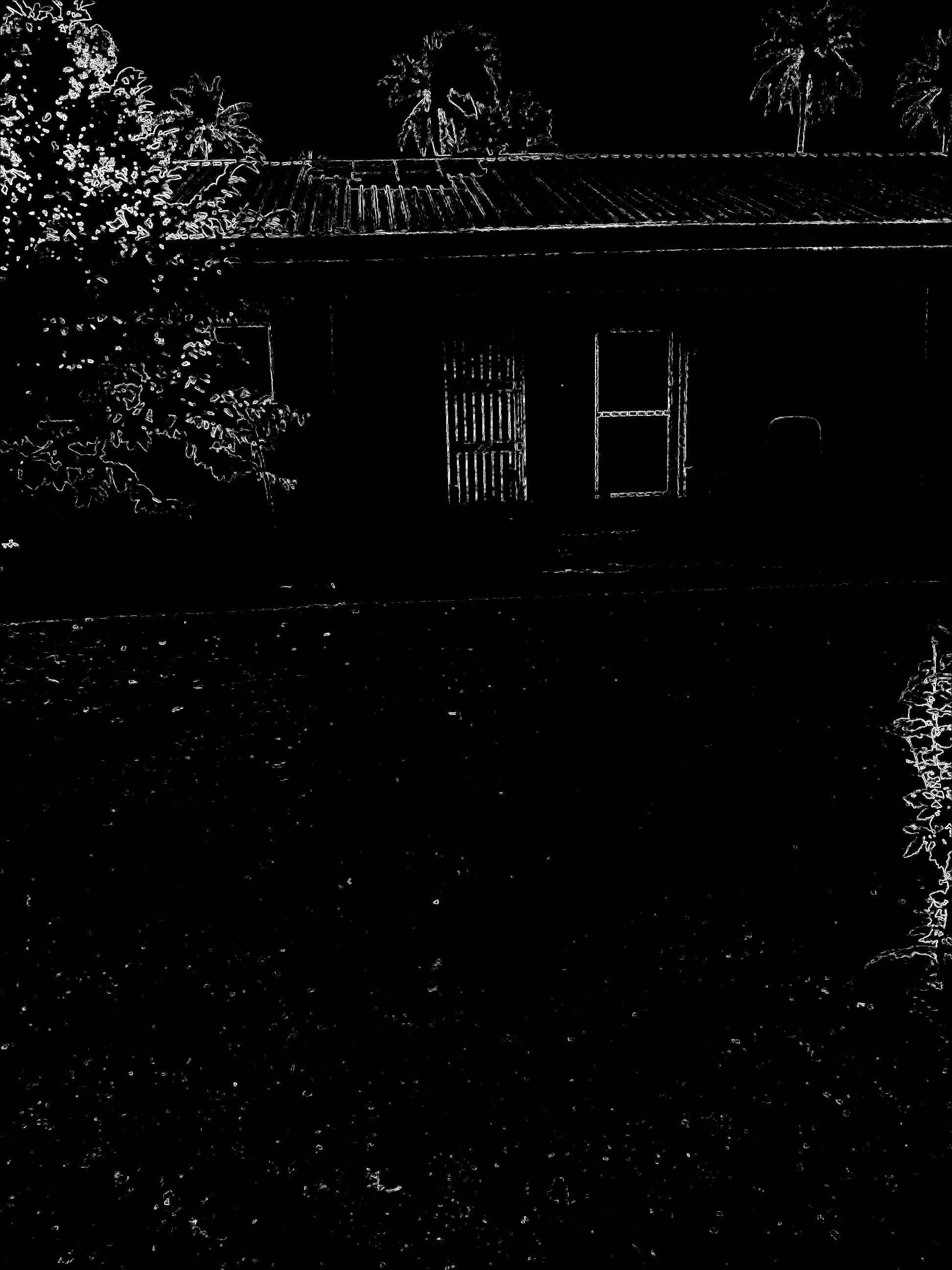
All is not well with thousands in a Delta community deprived 14kwh to power its only health centre
By Olusegun Elijah
Not many communities look exactly as god-forsaken as Orere—a settlement about 40 minutes’ bike ride from Ughelli in Delta. A 10-minute paddle from the Ewu end of the road, across the River Sieva, a dark, quiet tributary emptying to the River Niger, then ushers you in to the outermost perimeter of the village. Sieva is the only link Orere apparently has with civilisation. Further beyond the river shore sprawls a forest of rubber and palm trees, 40 metres tall, weaving into luscious umbrellas of greens, towering above thick lushes of climbers, brushes, and other weeds beneath. All watered by the August latter rain bucketing down. A labyrinth of footpaths and bike tracks in the forest lead in and out of the community.
To a naturalist, the forest heaves with floral energy.
Most things about Orere are actually defined by energy—or its absence.
A tiny spot on a flood plain, Orere boasts just a narrow dirt road of about 100 metres long, lined with houses stacked up on either side. Its denizens are mainly farmers and fishermen. They speak Urhobo. And they have a faith–Christianity–loudly proclaimed by the many churches, their screaming signposts, and churchmen in the village.
On the river, women in their 70s and, sometimes, pre-teen kids, for just N30, paddle canoes that ferry people in to and out of Orere. You can’t help wondering about the energy these frail canoeists expend working their wooden hollows, laden with humans and cargoes of farm produce, table water, beverages, and motorcycles–up and down the mangrove shores.
But to the natives, the weaker ones burning so many calories for so little is not enough to spring a wide-eyed surprise. “They make a living paddling canoes; same way drivers do driving their cabs,”‘ said a commercial motorcycle operator. “You can’t lack energy to ride your car even if you’re as old as those women.”
August 14 was a day after their market day. Market days—once every four days—are usually the only lively days at Orere. So there was no stirring of any sort that Wednesday. Low energy. Which is the most resounding feature of a typical daytime in the life of the community.
“They have all gone to farm,” Shadrack Sodje told the National Daily.
Sodje is a son of the soil, one of the 15 most educated natives Orere has currently. He graduated from the Delta State University, Abraka, and has a fairly good command of English. A family man, Sodje came back home from Port Harcourt to work as an N-Power teacher in his village.
On the order of the community chairman, he acted as the reporter’s guide. Orere may have no federal or state government presence; it has its own food chain. There is a community council of leaders: a chairman, a spokesman, and a youth president-general, among others. Then the youth: expired Niger Delta militants, stone-heads, ne’er-do-wells, others working their cassava cottage industry, commercial motorcycle operators, fishers, and so on.
Besides its pecking order, Orere also has a population, more than 20, 000 peasants, settled, and faced with similar needs, especially electricity, like every other Nigerian.
Their houses, many built with mud, have a fixture: fossil fuel-powered generators that roar into combustion nightly—from 8 pm to 11 pm. The power sets supply the energy needed for the brief period the people exude life in the 24 hours of a day. And the generators are the only sources of energy, apart from firewood, the community has known in all its years of existence.
Orere is the only community in Ewu Ward 3, Ughelli South, where there are no electric poles staked along roadsides, or bands of aluminum cables hung overhead, or step-down transformers planted at street corners.
Not that Orere is a new settlement. It is as old as Nigeria , the community chairman told the National Daily. Chairman Famous Irhobo, black, of average build, in his 60s, is an evangelist—now. In his salad days, when he bristled with energy, he was a karate fighter. In his living room packed with fancy furniture, a portrait of him doing a wide-angled Yoko Geri Keage martial kick hangs 0n a wall covered in a text coat. The house, a bungalow, painted cream colour on the outside, sports basic conveniences: a fridge, a television set, fans, bulbs, all powered by a generator. Apart from church buildings that sit like lilies in the mire here and there, Irhobo’s house easily gets some eyeballs among the jumble of rusty cribs that dot Orere.
There are no fewer than 14 other hamlets under the community, according to Nero Opakol, the youth president-general.
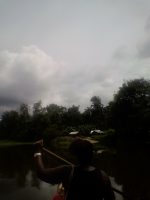
So over 20,000 people, he said, look to Orere, with all its energy poverty, for many of the creature comforts that require power, most importantly primary healthcare delivery service.
At Udugbor, on the edge of the community, about a 10-minute walk from the village centre, sits a two-ward primary health facility. It’s hemmed in by bushes on one side, and on the other by cassava lots. The wards were empty the first day the National Daily visited.
The building has been there for about a decade. It looks dull even with its cream colour, which marks it as a health post, going by the Nigeria Primary Health Care Development Agency (NPHCDA) designation. No signpost, though. More confusing is the fact that as a health post, the centre should operate from 9 am to 4 pm five days a week. It, however, opens 24 hours, daily, like a health clinic, to a population well over 5000 the NPHCDA standard threshold. The clinic has a one-nurse staff instead of the standard 12-man workforce.
Either a health post or clinic, the Orere health facility runs virtually on no power to serve those 15 communities in the axis. But to keep rodents at bay, and maintain its name on the list of health facilities in Delta, the clinic dissipates some 1/2kv of electricity when it can.
Its building has no fewer than 18 points of power output, mainly for lighting: six large encased bulbs on the outside, eight bulbs on the inside, including the labour room, ward 1 and 2, a consulting room which has just two blue plastic chairs and a table littered with notebooks, pens, drugs, and unused hypodermic needles. It has a point each in the drug dispensary, the hallway which doubles as the reception, the toilet, and the store. There is also a pumping machine output outside.
Heating, ventilation, refrigeration, sterilising, and other hospital procedures requiring electricity have no socket at the Orere clinic. In other words, there is no power input to run the clinic’s cold chain and sterilisation.
The only source of power available, at night, between 7 pm and 11 pm, is one Tiger Head generator of about 650VA. It’s owned and fuelled by the clinic only one worker. “Using the gen even depends on having somebody to help me pull it on,” said Mrs Eunice (not real name).
Eunice said she is a trained nurse, posted there from the Ughelli South Local Government Area. She’s black, four-feet tall, either in her late 30s or early 40s. Her understanding of the power needs of the clinic she manages is difficult for her to express. You, too, will have problem making her understand the farrago of Greek you speak as you labour to fill her in on the UN sustainable Development Goals for powering health.
But she told the National Daily how much fuel she burns monthly to just light up some of the bulbs in the clinic most nights. “I buy about 25 litres of petrol every month…my own money… since I was posted here in 2016,” she said. At Orere, a community in the oil-bearing Niger Delta, a litre of petrol sells for between N250 and N300.
There’s a bunch of clinical rituals a hand-worked generating set cannot power in a functional health clinic. It sure can’t power a sterilising oven; it can’t power a fridge for keeping blood, drugs, and vaccines cool; nor can it power more than two ceiling fans. No mention of a Heating, Ventilation, Air Conditioning (HVAC) system for keeping temperature at an optimal level. The generator cannot power any cooking appliance either.
Added up, all these “can’ts” obstruct access to rural health care delivery. By law, Nigeria’s primary health care system is created to provide a suite of health care services: maternal and child health, community hygiene to prevent and control communicable diseases, drug dispensation, and nutrition education.
But with such a hopeless energy supply, whatever service the Orere clinic can deliver, its patients, mostly women and children, go through the wringer to get it.
Windows and doors are open for as long as possible when a patient is getting treatment. The reason is that there are no fan or air conditioner to keep the temperature balanced. Mosquitoes, which the community call giants of Africa, then swarm in so much so that patients don’t want to stay overnight for fear of complicating their malaise with malaria. “That’s why most people don’t bother to go there,” said Irhobo. “They prefer traditional healing homes.”
When the sun is overhead at Orere, baking, these open doors and windows make no difference. Patients have to move into the clinic hallway–to air out. Here the floor is covered with long parallel stripes of red and black linoleum. A sick child was lying on the floor the second time the National Daily visited the clinic at noon. ” We let them lie down on the cold floor when the heat is too much in the ward,” said the nurse.
There are five births, on average, at the Orere health clinic. The only facility provided for this is its labour room which has bare walls, a dead fluorescent tube, and a mounted stretcher. Nothing else.
“We should have been having up to 12 births, considering our population here,” said Irhobo. Which means more deliveries could have further taxed the scanty energy resources of the clinic.
Any birth procedure requires sterilization—a dirty word at the clinic. “No sterilization; we throw away syringes and anything we use for each patient,” said Eunice. But forceps, ventilators, suction machines, and other equipment, which the clinic necessarily needs, for child delivery are no disposables; they require sterilisation for each use. According to medical experts, sterlising medical devices prevents build-ups of bacteria, and spread of infections.
For the same reason (poor energy access), refrigeration is also alien to the Orere clinic. “We don’t take in any patient who requires blood transfusion,” said the nurse. Such gory cases are referred to Ughelli.
Referrals from Orere to Ughelli are a hell of an experience. The villagers take their sick ones there on a wing and a prayer.
“It’s God that’s just taking care of us here,” said Sodje.”To take your wife in labour to the health centre here requires a bike. You spend 10 to 15 minutes getting her there. And you are there … they have to refer her to Ughelli. When you get to the riverside canoes might not be available.” A canoe ride to the Ewu shore takes 10 minutes. “It’s like we don’t have a health centre here,” he said.
Power is not the only problem battling the Orere clinic. No staff. No equipment. Not enough drugs. But lack of power simply worsens the situation.
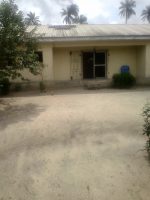 A rural health clinic like that at Orere, an off-grid community, has a standard power need—for both staff and equipment. According to the Minimum Standard for Primary Health Care by the NPHCDA’s planning and research department, refrigeration and sterilisation are basic in the energy requirement of such facility.
A rural health clinic like that at Orere, an off-grid community, has a standard power need—for both staff and equipment. According to the Minimum Standard for Primary Health Care by the NPHCDA’s planning and research department, refrigeration and sterilisation are basic in the energy requirement of such facility.
Dissecting forceps, dressing forceps, needle-holding forceps, episiotomy scissors (jabbed into birth canals during difficult labour), urinary catheter, suction machine are pieces of equipment that must be sterilised. For this, an energy-guzzling sterilisation oven is required—and equally stated on the list. Refrigeration is also required for drugs, vaccines, blood samples, blood banks, and ice packs. The World Health Organisation (WHO) has emphasised the importance of refrigerating vaccines. By 2025, the world’s health body says, vaccine refrigeration capacity needs to expand 8 to 10 times to meet the vaccine needs of a growing global population.
For refrigeration, the NPHCDA standard recommends a solar fridge, and another one powered by the grid or fuel. But at Orere, the clinic has neither the energy source nor the refrigerator.
Clinic staffers too have their power needs to help keep the clinic operating. Twelve of them—two nurses, six community health workers, two attendants, and two security guards—are to a clinic, according to the standard. Orere’s clinic has just one nurse. “Those posted here won’t come because they cannot live in a community without light,” said the nurse, referring to lack of electricity.
Apart from the NPHCDA minimum standard, the UN has its own idea of energy consumption for a clinic. First, lighting, HVAC, and communication are a given on the UN Interagency List of Essential Devices for Reproductive Health Requiring Electricity. It then adds, for a primary health clinic, at least three devices: doppler, sterilizer, and baby warmer. These are gizmos you can’t find at the Orere clinic—because there is no means to power them.
This dearth simply confirms a WHO study in 2011. Its research found out that more than 25 percent of rural health facilities in Nigeria lack access to affordable and reliable power supply.
And the effect, according to the report entitled Energy Access and Resilience, rears up in the increasing inability of these rural health facilities to cope with the changing patterns of diseases. “As disease patterns change, even more energy is required to expand services for prevention and treatment of non-communicable diseases,” the report stated.
Same goes for even communicable diseases—at least at Orere. Sodje said cholera breaks out at intervals. And some of the victims die. “I have treated up to five victims they brought here,” said Eunice. ” There are some that like to treat it on their own.”
That’s too big a risk to take. They do, still, because they have no confidence in the capacity of the clinic—a facility that cannot even power the most basic of its lighting and diagnostic instruments, and attract capable hands—to handle such outbreaks.
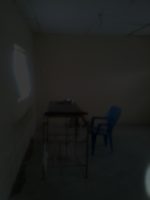
As one of the 23 in Ughelli south, and the 445 under Delta’s ministry of health, the Orere clinic, ideally, is in the same primary health facility Category 2 as any other in the state. Monies are allotted yearly to manage them. For instance, the ministry’s approved budgets for 2017 and 2018 have capital votes—N250 million and N150 million respectively—for solar power at these rural hospitals. How far the budget met the energy demands is in question, though.
Figuring out a primary health facility’s power needs seems a luxury for now. The NPHCDA minimum standard never contemplates it. But some figure-crunching based on the standard’s list of medical instruments requiring power in a rural clinic gives an estimate, using the Benin Electricity Distribution Company calculator at www.bedcpower.com.
Refrigerator (20 cubic feet) –265watts x 10hrs/ 1000 = 2.65kwh
Solar refrigerator—100watts x 10hrs=1kwh
Sterilisation oven — 1200wattsx 0.5hr/day= 0.6kwh
8 Fluorescent bulbs– 11 watts x8x 13hr/day= 1.14kwh
4 Halogen lamps — 40wattsx 4×13 hrs/day =2.08kwh
Fans (4) — 100x4x 16 hrs/day =6.4kwh
Water pump 0.5 hp–375 x0.2 hr/day=0.075kwh
Total: 13.945kwh daily
The Orere clinic, then, needs about 14kwh of power daily—from the grid. And the estimated cost the BEDC covering Delta charges stands at about N35 per kwh (2018 tariff), or N490 daily.
This means: In an ideal energy-sufficient environment, the Orere clinic needs 420kwh monthly at N14700. This appears a bargain. The benefit of having access to a reliable supply of energy in the clinic sways the cost.
But things are different here. Orere languishes 20 minutes’ drive off-grid. And its clinic is condemned to this horror of an ill-powered health delivery service.
The clinic could have benefited from the health ministry’s general budgets for electrifying rural hospitals. The community also could have enjoyed some interventionist projects and state provisions over the years.
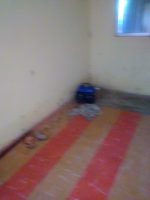
On the books, the PHCN electrification that ended at Ewu was supposed to be extended to Orere. The sums of N150 million and N60 million were budgeted and approved for this in 2017 and 2018 appropriations by Delta’s energy ministry. The Niger Delta Development Commission has also carried out rural electrification across the Niger Delta. The Rural Electrification Agency had 133 projects on-going across the south-south between 2016 and 2017. Out of the 52 in 2016, 11 electrification projects were sited in Delta, with N322 million capital release.
All of these, one way or the other, could have rubbed off on the clinic. But Orere has always been unlucky, easily passed by.
DESOPADEC, too, has a rural development mission it’s been carrying out in the hinterland. One of its 13 commissioners representing Udu/Urhobo in Ughelli South had once jazzed up Orere’s hope. “Commissioner Itihwe Amos promised years ago he would bring solar electrification projects to us,” the chairman told the newspaper. Why the project is not forth-coming remains a puzzle. Four years on, Irhobo and his people are still hoping to see the light at the end of the tunnel.
The National Daily attempt to interview Itihwe didn’t pan out well. A text message sent to his phone asking for clarification sparked a hide-and-seek instantly:
“Until I see you, no comment, sir,” he responded.
“Thanks for your prompt response, sir. I will appreciate it if you give me an appointment.”
Where do you live, sir?” He asked.
I live in Lagos. My office at 29b Emina Crescent, Off Toyin St, Ikeja.”
“Quite a distance. Are you from Orere?”
“No, sir. My name is Olusegun Elijah.”
That settled it—the curious cat is not a native of Orere. No clarification whatsoever came from the DESOPADEC commissioner thereafter.
Itihwe, fair-skinned, six-feet tall, is just being careful. He has an ambition that is equally lofty: House of Reps in 2019. He’ll soon grow out of the commission, and leave Orere’s electrification a pipe dream, and the natives energy-poorer.

An average Orere peasant, said Sodje, makes about N50, 000 monthly. They spend more than 10 percent of the income on fuelling their generator. Irhobo, for instance, told the National Daily he buys about 24 litres of fuel every four days to power his house. That’s about N42,000 monthly–at N250 per litre. The EU pioneered the study of the relationship between energy and poverty. Its researchers describe a household that spends more than 10 percent of its income on energy as poor. Energy poor, that is.
More than 1 billion people, says the International Energy Agency, are this poor around the world. About 620 million of them are in Africa. And Orere is in the league of about 100 million people, according to REA, or 75 percent of Nigeria which, the National Bureau of Statistics says, grope in abject energy poverty.
The Orere people believe the government is to blame for the energy-poor condition of their clinic. “Though we don’t know anybody in government, we are part of Nigeria,” said Chief Aladdin Osegie, the spokesman of Orere.
While the 70-something-year-old saw neglect, Wilson Osas, a rural development worker the reporter met the second night at the Orere clinic, saw lack of accountability.
“Government development projects are only completed on paper; they are not expected to be on the ground,” he told the National Daily in front of the clinic as night gradually crept over the building, and a hurricane lamp struggled to glow in the dark hallway.
“We have lots of interventionist programmes—NASCOM, NDDC, DESOPADEC—but nobody monitors what they do,” he added. ‘That’s why you can see for yourself how a rural health centre operates in darkness at Orere.”
But the government, too, will like to finger insufficient funds for neglecting the only health facility serving thousands in the area.
Experts, however, believe it’s about innovation, especially in a beleaguering energy crisis like Nigeria’s. For innovation, an off-grid community’s health facility that consumes 14kwh daily can make do with renewable energy sources—or a hybrid.
“There has been a few commercially viable alternative and new technology in power,” Tunji Iromini, CEO of SolarCentric Technologies, told the National Daily on sharing the Orere clinic experience.
He listed solar, wind, biomass and energy storage in batteries among other solutions. “There is no one size fits all. Each case is evaluated on its application and merit. ”
The Orere clinic scenario, he said, is in fact too small and simple. From his experience, the solar technology has been used in complex situations. He cited the case of a hospital whose daily demand is in excess of 500kWh/day.
The cost won’t break a bank, either, even for the entire community. “Going by the 14kWh/day you estimated, the budgeted amount [N160 million and N60 million in 2017 and 2018 respectively for connecting Orere to the grid] is more than sufficient to provide off-grid power without any need for grid connection,” Iromini said.
Money might not necessarily be a problem. Delta is a state that can throw millions around for a makeover. About N100 million was budgeted annually for renovating the state’s deputy governor’s house in 2017 and 2018.
A slice of that could have fixed the power need of the Orere clinic using solar technology–a simple system to implement, according to the expert. Although for logistics and security concerns due to the remote location of the clinic, deployment cost for 24/7 availability, he said, could be in a couple of millions of naira.
For a health clinic that requires 15kwh daily, photo-voltaic panels of 3,600 W, and 60 kwh battery will be in order. These cost $36,000 and $6,000 respectively, going by a global estimate by a USAID study. The 36-page document entitled Powering Health also puts the operating cost for powering a clinic at $1,150 yearly.
In Nigeria, a 300w photo-voltaic panel sells for N60,000. It will cost the Orere clinic N720,000 to get the panels, for instance. Other costs could tot everything up to N1 million. That is still on the cheap. On the credit side, according to the USAID research, the PV technology can last up to 30 years. So the system will power the Orere clinic till 2048.
Orere itself could borrow the technology—for its lighting, heating, and other low-power electricity needs–instead of waiting for a grid connection. Even if connected, the community must have needs bankable enough for the power mongers in Nigeria’s electricity market to come in. “Unless for other identified needs, there might be no business case for grid extension to Orere, ” Romini said.
In case it’s grid connection or nothing else for Orere, the thousands living in this community and its neighbours will have to wait until they are commercially ripe for the BEDC. While waiting, they may have to lift up their heads, looking to heaven for divine vaccines, anti-bodies, and hygiene instructions. After all, Evangelist Irhobo, Sodje, and others the National Daily interviewed claimed God has been Orere’s only source of healing.
This project is supported by the Wole Soyinka Centre for Investigative Journalism
You may like


Oborevwori congratulates Great Ogboru at 66
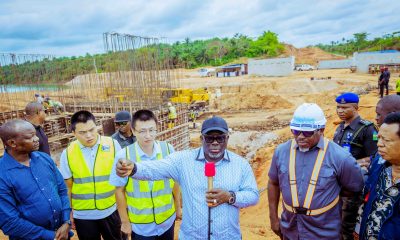

We’ve done enough projects to celebrate 1st year in office – Oborevwori
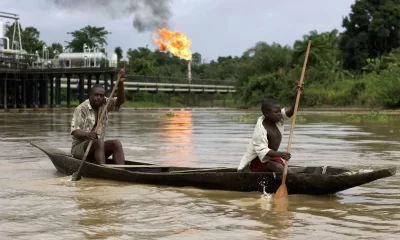

Ijaw youths fault ex-General for linking Okuama killings to pipeline protection contract
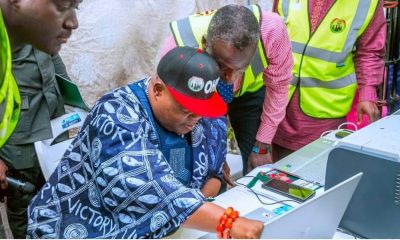

Osun Governor inaugurates Primary Health Care task force
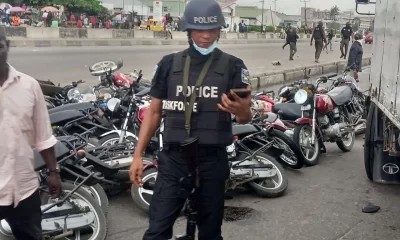

OKADA RIDERS’ PROTEST: Delta warns against breach of public peace


Two killed as Okada riders clash with task force in Asaba
Trending

 Business7 days ago
Business7 days agoDollar crashes further against Naira at parallel market

 Football20 hours ago
Football20 hours agoGuardiola advised to take further action against De Bruyne and Haaland after both players ‘abandoned’ crucial game

 Business7 days ago
Business7 days agoRecapitalisation: Zenith Bank to raise funds in international capital market

 Education7 days ago
Education7 days agoArmy reveals date for COAS 2024 first quarter conference
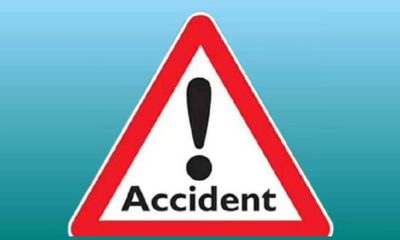
 Crime7 days ago
Crime7 days agoFleeing driver injures two on Lagos-Badagry expressway
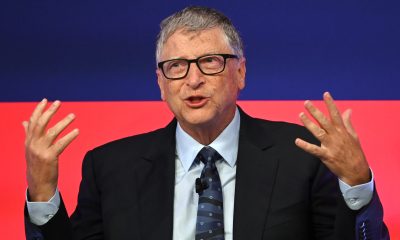
 Covid-197 days ago
Covid-197 days agoBritish legislator demands Bill Gates, other ‘COVID Cabal’ faces death penalty

 Business7 days ago
Business7 days agoZenith Bank surpasses N2trn earnings milestone
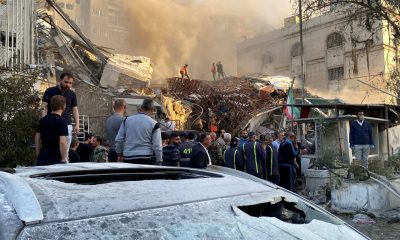
 Latest5 days ago
Latest5 days agoIsrael pounds Hezbollah with airstrikes after Iran attack

